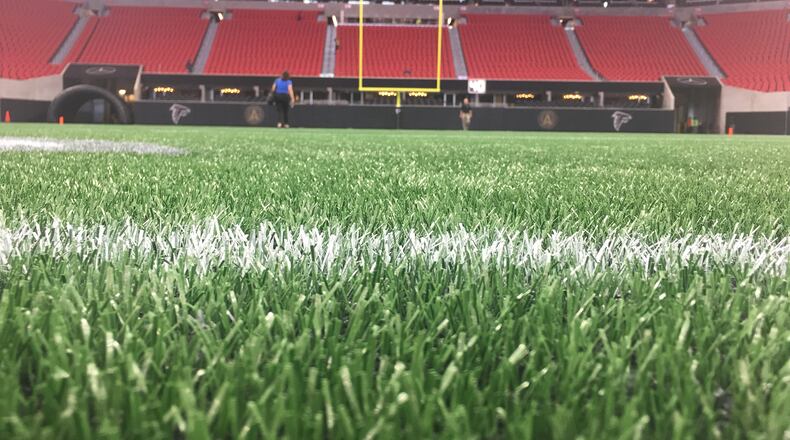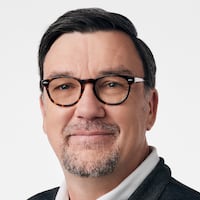As exciting as it will be for Atlanta United's players to see all of their new work spaces at Mercedes-Benz Stadium when they train in the $1.5 billion building for the first time Saturday, the turf may receive the most scrutiny.
The lockers are spacious. The locker room is gorgeous (more on those will be posted Friday). The hydrotherapy room and trainer’s rooms are close by. There is a pregame meal room that can be converted into a family room. There is a kick room where the players can warm up in private, if they don’t want to do so on the field in front of 71,000.
It is a footballer’s fantasy.
But the field, where the points ultimately will be won or lost, may be the thing that all eyes will observe more closely than anything else. The player want a soft but quick surface, and the fans, who don’t want to see any football lines (they won’t; they can be scrubbed off).
The analysis comes down to this: Players prefer to play on grass. Atlanta United’s players loved the natural surface at Georgia Tech’s Bobby Dodd Stadium.
The field of Mercedes-Benz is artificial turf. FieldTurf Revolution 360, to be exact. The team announced in February 2016 that it was going to use a different manufacturer, but switched in April 2017.
“Coming from South America, I’ve played on artificial grass a few times,” midfielder Carlos Carmona said. “It’s just something we will have to get used to.”
The same type of turf was installed at the team’s training facility in Marietta. The players have practiced on it and will train on it at least once a week to become more acclimated to Mercedes-Benz Stadium, according to manager Gerardo Martino.
“Based upon what I see and turf fields we have here, the turf is a little high, so the ball won’t roll,” Carmona said. “But I think we will be able to water it down and speed it up.”
Generally, balls roll more slowly on dry artificial-turf fields compared with dry grass fields, and roll more quickly on wet turf fields compared to wet grass fields.
Atlanta United captain Michael Parkhurst said the players hope the turf at Mercedes-Benz Stadium can be watered. They also want it to be soft. During a tour of the stadium Tuesday, media members were permitted to walk across the field. It was soft, almost squishy.
“Hopefully it can stay that way as long as possible,” Parkhurst said. “Want to see how it feels under foot and how the ball rolls.”
Five other stadiums used by MLS teams feature an artificial surface. Two, Providence Park in Portland and CenturyLink Field in Seattle, use the same surface as was put in Mercedes-Benz Stadium.
The team will play its first game in the stadium Sept. 10 against Dallas. It will then play seven of its remaining nine games at home.
Aside from the feel of the turf and how the ball will move across it, the size of the field will also be of interest to the players.
The pitch size at the team’s previous home was among the smallest in MLS, at 70 yards wide by 110 yards long. The field at Mercedes-Benz Stadium will be 75 yards wide by 115 yards long. It’s not the biggest among the 22 stadiums used by MLS teams, but will be closer to the norm than Bobby Dodd Stadium was. The turf field at the training facility is the same size as the field at Mercedes-Benz Stadium.
Because Atlanta United features some of the quicker players in MLS, and Martino prefers to press opponents to create turnovers, a bigger field should be more advantageous to using the speed and tactic.
“Offensively, you can spread out and make the other teams chase,” Parkhurst said. “For possession teams it’s very good if they want to try to press. If they can get disorganized, (you can) play through lines easier.”
About the Author
Keep Reading
The Latest
Featured


